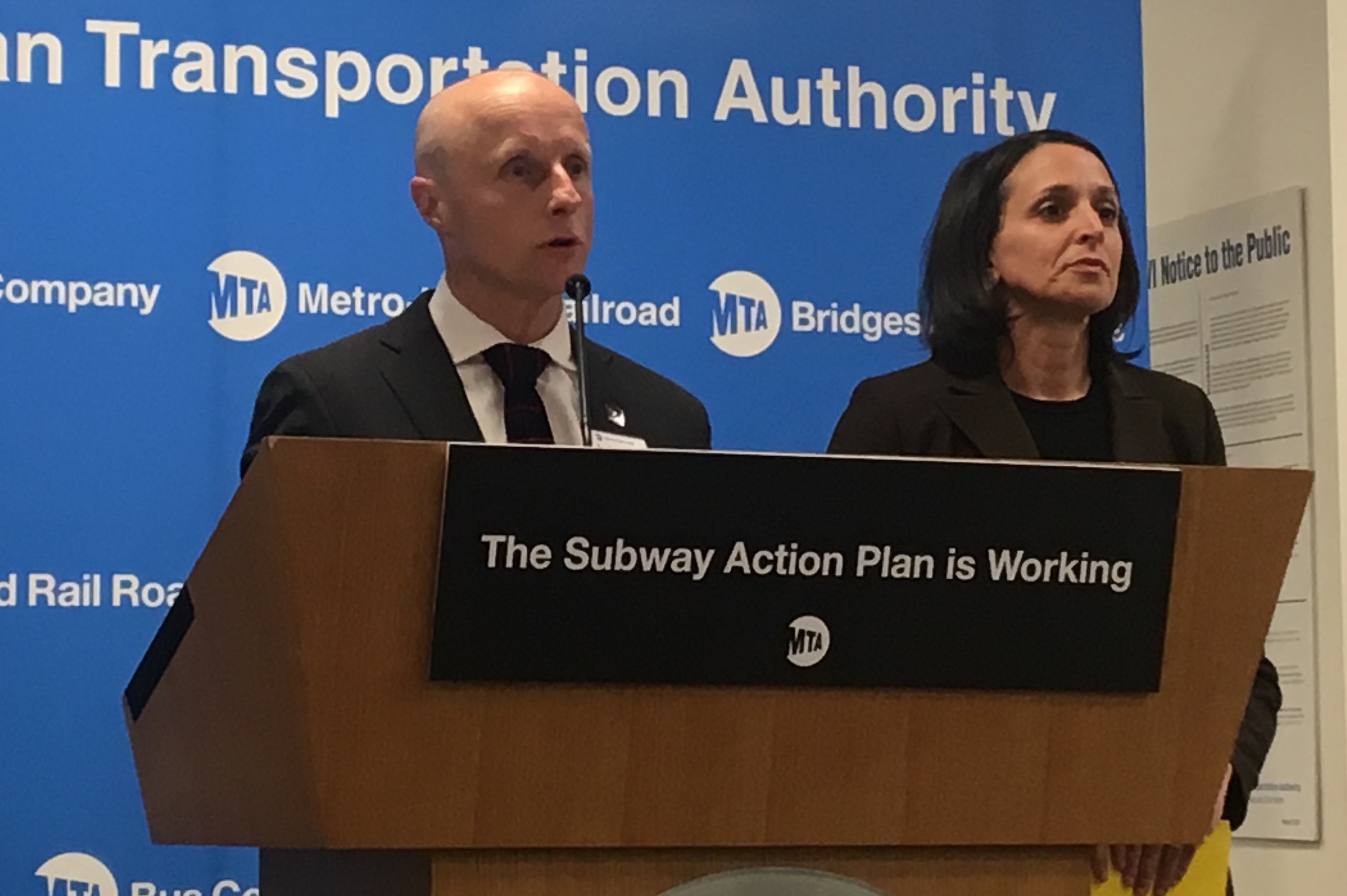MTA leadership has a message for New York State lawmakers: we're doing what we need to do to turn the subway system around — now give us the money we need to finish the job.
Under New York City Transit President Andy Byford, the subways continue to see marked service improvements: On-time performance last month was over 75 percent, compared to 6o percent last February. Other metrics — delays, customer journey time, on-time performance — are similarly trending in the right direction. Customer complaints, meanwhile, are down.
"I want the takeaway from this to be clear: If we invest in the subway system, combined with improving operational excellence, our customers will see sustained operational improvements," MTA President Pat Foye told reporters on Monday. "We need funding from state and city partners to improve it, and congestion pricing is the best way to both fund the MTA and fix the subways."
Foye and other officials have been back and forth from Albany in recent weeks pitching skeptical legislators on Gov. Cuomo's congestion pricing plan, which would charge drivers to enter Manhattan below 61th Street.
In his comments, Foye argued that Cuomo's 2017 Subway Action Plan, which threw $836 million into the system, was responsible for the improved performance metrics. The truth is messier: As Signal Problems writer Aaron Gordon has noted, that plan was "designed to be amorphous enough that it’s nearly impossible to judge whether it was a success or a failure." The system has only begun to show measured improvements since Byford and Subway Senior Vice President Sally Librera took the reins, in January and May respectively.
Pressed by reporters on whether the recent progress sends the message to legislators that the MTA is capable of improving service without extra funding, Byford stressed that his Fast Forward plan to rehabilitate and modernize the system aims to do more than bring service metrics back to their 2013 numbers.
“By investing massively in our capital plan, we can create the subway of tomorrow, which is exponentially more reliable because we will be replacing existing legacy systems with systems that are inherently more reliable… [and] have exponentially more capacity," Byford said. "That is within our grasp, that’s the golden opportunity, and that is my pitch to legislators."
State legislators are increasingly convinced that they must do something to fund the beleaguered transit system, which faces massive operating budget shortfalls in the coming years as well as $40 billion in capital needs. Senate Majority Leader Andrea Stewart-Cousins has signed onto congestion pricing, endorsing some version of it in the one-house budget released by the Senate Democratic Conference last week.
“State lawmakers understand that our transit system is running equipment from a pre-modern era and that we wont truly see reliable service until we solve that problem,"said Riders Alliance Executive Director John Raskin.
But the program is still short on votes in the assembly, where there is little outright opposition, yet a signifiant number of members sitting on the fence.
"We’re still ironing it out in the assembly — what the actual program will look like: the cost of everything, the access points and where people will be charged versus won’t be charged and everything," Assembly Member Diana Richardson told Streetsblog last week. "The concept is something I do support. I just would love to see it fleshed out a little bit more and make sure that it’s something that is fair to all New Yorkers."
Richardson once called herself undecided on the issue, so her conversion to the congestion pricing cause offers supporters some optimism.
"More so now than ever, I’m more for [congestion pricing] because I know that the funding stream will be dedicated to fixing the MTA," she said. "We are in a bind because we’ve neglected the system for so long."
The good news? MTA officials touted decent numbers on Monday. Last month's weekday on-time performance was 14.7 percent higher than February, 2017. Meanwhile, customer journey time, the percentage of trips completed within five minutes of their scheduled time, is up 4.3 percent from last February. Additional train time, the measure of extra time riders spend on a train due to service failures, is down a whopping 27 percent.
Additional reporting by Ben Verde






